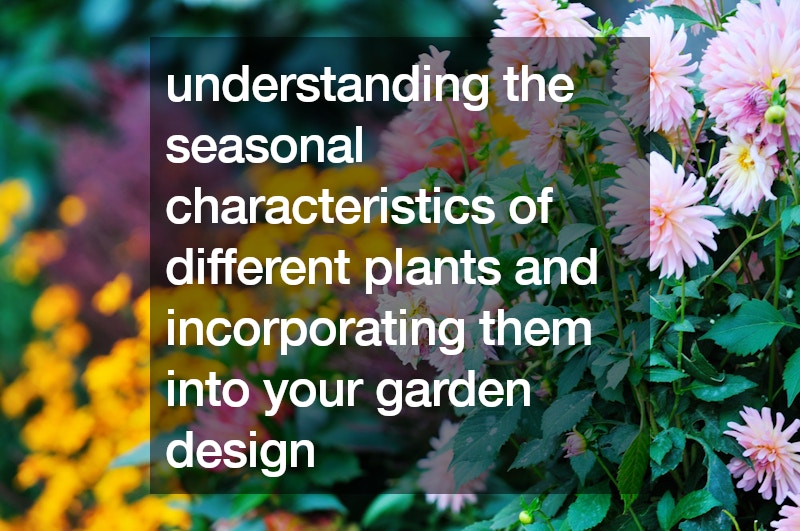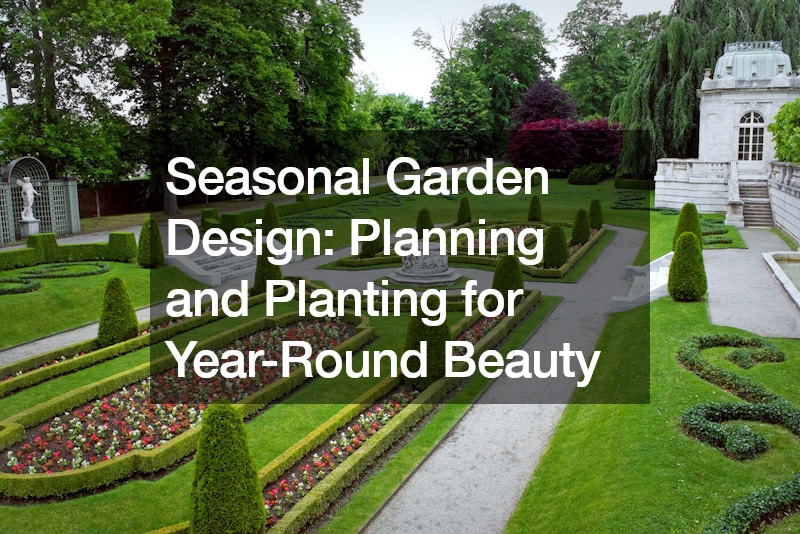Designing a garden that offers visual appeal and interest throughout the year requires careful planning and strategic planting. By understanding the seasonal characteristics of different plants and incorporating them into your garden design, you can create an outdoor space that remains vibrant and engaging in every season. This guide will provide you with practical tips and ideas for achieving year-round beauty in your garden.
Understanding Seasonal Characteristics
To create a garden that looks beautiful all year long, you need to be familiar with the growth cycles and characteristics of various plants.
Each season offers unique opportunities and challenges for garden design:
Spring: This is the season of renewal and growth. Many plants burst into bloom, adding fresh colors and fragrances to the garden. Key plants include tulips, daffodils, cherry blossoms, and magnolias.
Summer: The garden reaches its peak during summer with lush foliage and a wide variety of flowers in full bloom. Roses, hydrangeas, lavender, and sunflowers are popular choices for summer gardens.
Autumn: As temperatures cool, the garden transforms with vibrant fall colors. Trees like maples and oaks, along with chrysanthemums and asters, provide striking reds, oranges, and yellows.
Winter: Though it’s the most challenging season for maintaining garden beauty, strategic planting can still offer visual interest. Evergreen trees, holly bushes, and plants with interesting bark or winter berries keep the garden lively.
Planning Your Garden Design
Successful garden design for year-round beauty begins with thoughtful planning. Consider the following steps:
Assess Your Space:
Evaluate the size, shape, and existing conditions of your garden area. Note any features like slopes, shaded spots, or sunny areas, as these will influence your plant choices.
Create a Year-Round Plan:
Divide your garden into sections based on seasonal interest. Ensure that each area has plants that will be at their peak during different times of the year. This way, as one part of the garden fades, another will be coming into its prime.
Choose the Right Plants:
Choose plants that suit your climate and soil conditions. Incorporate a mix of annuals, perennials, shrubs, and trees to provide a variety of textures and colors throughout the year.
Consider Bloom Times:
Plan for staggered bloom times. For example, plant early-blooming bulbs like crocuses and snowdrops for early spring, followed by tulips and daffodils for mid-spring. Continue with summer blooms like lilies and dahlias, and finish with fall flowers such as asters and sedums.
Incorporate Evergreen and Structural Plants:
Evergreens and plants with interesting shapes or textures can provide structure and continuity in your garden design, especially during winter when other plants are dormant.
Seasonal Planting Tips
Each season presents unique planting opportunities and care requirements. Here are some tips for each season to help you maintain a beautiful garden year-round:
Spring:
Begin with soil preparation by adding compost or organic matter to enrich the soil.
Plant spring-blooming bulbs in the fall to ensure they bloom as the weather warms.
Divide and transplant perennials that have outgrown their space.
Summer:
Water your plants regularly, especially during dry spells, to keep them healthy and vibrant.
Deadhead spent flowers to encourage continuous blooming and maintain a tidy appearance.
Mulch around plants to retain moisture and suppress weeds.
Autumn:
Plant trees and shrubs, as the cooler weather and increased rainfall help them establish roots.
Add fall-blooming plants to extend the garden’s color into the cooler months.
Clean up fallen leaves and spent plants to prevent disease and pests from overwintering.
Winter:
Protect delicate plants with burlap or frost covers to shield them from harsh weather.
Prune trees and shrubs to maintain their shape and remove any damaged or diseased branches.
Plan next year’s garden design and order seeds and bulbs early.
Enhancing Year-Round Interest
To truly create a garden that captivates in every season, consider incorporating these additional elements:
Pathways and Structures:
Use stone pathways, wooden arbors, and metal trellises to add structure and interest that lasts throughout the year.
Water Features:
Ponds, fountains, and birdbaths attract wildlife and add a soothing, dynamic element to the garden.
Lighting:
Outdoor lighting can highlight key features of your garden, creating a magical atmosphere even during the darker months.
Garden Art:
Statues, sculptures, and other forms of garden art can provide focal points and enhance the visual appeal regardless of the season.
Conclusion
Creating a garden design that shines in every season is a rewarding challenge that requires thoughtful planning and a keen understanding of plant characteristics. By selecting a variety of plants with different bloom times and incorporating structural elements, you can ensure that your garden remains beautiful and engaging all year long. With careful planning and seasonal maintenance, your garden will be a year-round haven of natural beauty and tranquility.
.

